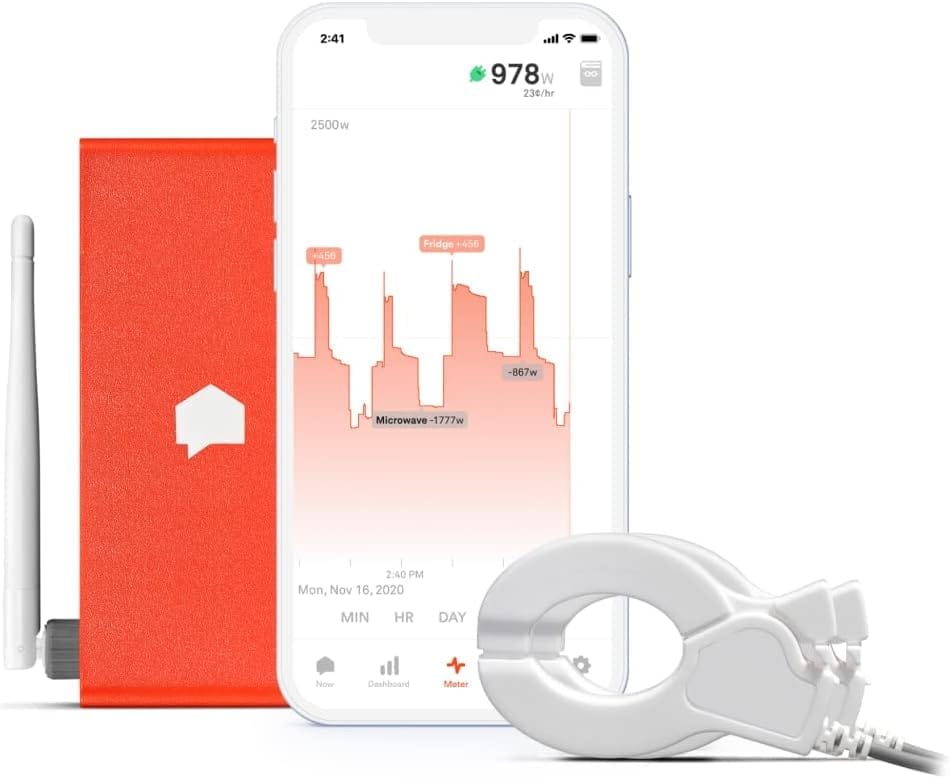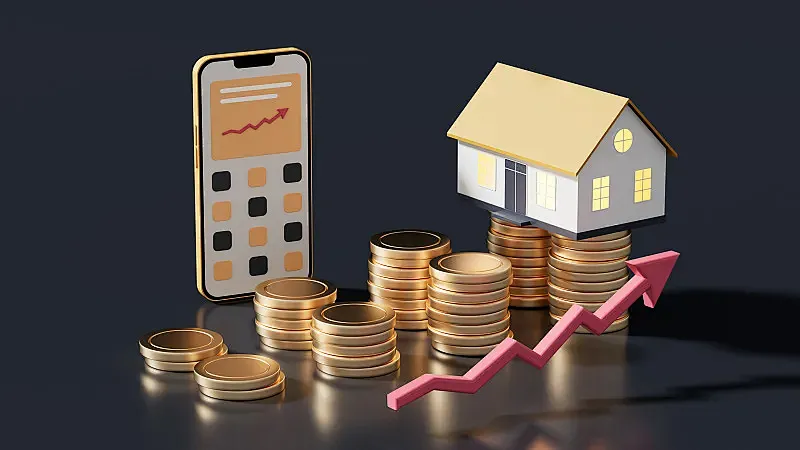Introduction: Embracing Smart Energy Devices for a Greener, Cost-Effective Home
In 2024, smart energy devices have become essential as households strive for both energy savings and environmental responsibility. With rising electricity costs, home energy conservation isn’t just a buzzword – it’s a necessity. Among the many devices out there, real-time energy monitoring devices and energy-efficient thermostats are taking center stage. But what makes a home energy monitor the top choice in this movement?
Imagine this: you’re planning to install solar panels and want to understand your home’s energy consumption first. Knowing exactly how much power your household uses and which appliances draw the most power can help you decide the ideal solar system size, ultimately leading to a better return on your investment. This is where an energy monitor shines. Not only does it track power usage, but it also provides actionable insights that make managing and reducing energy consumption simple.
1. The Growing Demand for Home Energy Conservation
Smart energy solutions are growing in demand as they provide clear benefits in both cost and energy savings. For many households, the initial motivation to consider energy-saving solutions comes from rising electricity bills. According to recent statistics, North American households have seen an average increase in electricity costs of around 10% over the past few years. With rates likely to continue rising, using a smart energy device to monitor and manage electricity usage is becoming a wise financial move.
2. Core Benefits of Real-Time Energy Monitoring Devices
A real-time energy monitor doesn’t just show you your total energy usage – it breaks down consumption by appliance or room. This information can be eye-opening. Did you know that older refrigerators and water heaters often consume more energy than newer, energy-efficient models? With this device, you can quickly see where your electricity is going and take action, like upgrading an old appliance or adjusting your habits.
Practical Use: Evaluating Power Consumption Before Major Home Upgrades
Before investing in major upgrades, like a new air conditioning system or solar panel installation, an energy monitor can give you insights into current power needs. Many homeowners find that knowing their daily and peak energy use helps them decide which upgrades will make the biggest impact.

3. Why Home Energy Monitors Stand Out Among Smart Energy Devices
While smart thermostats and smart plugs are valuable tools in home energy conservation, a home energy monitor offers a unique, comprehensive advantage. Unlike single-purpose devices, which only control specific appliances, a home energy monitor oversees the entire household’s power consumption. It provides the insight needed to optimize energy use across all devices, from the HVAC system to your home office setup.
Comparing Smart Devices: Why Energy Monitors Offer More
Think about smart thermostats. They’re excellent for optimizing heating and cooling schedules, and many models even offer energy-saving modes to reduce power usage. However, a thermostat can only control temperature; it doesn’t provide a holistic view of your home’s energy landscape. Similarly, smart plugs are useful for controlling individual appliances remotely, but without knowing your overall consumption patterns, these can feel like isolated solutions.
A real-time energy monitoring device, on the other hand, captures data from across the entire electrical system, presenting it in a simple app. This allows you to see what’s consuming the most energy, even when you’re not home. Over time, this data lets you pinpoint which areas in your home could benefit most from energy-efficient upgrades.
Real-Life Application: Planning Efficient Appliance Use
Consider this scenario: you have a busy family household where different devices – like the dryer, dishwasher, and air conditioning – run throughout the day. Using a home energy monitor, you can see the peak hours of power consumption and adjust schedules to run heavy appliances during off-peak hours, often resulting in lower energy bills if your provider offers time-based pricing.
4. How Energy Monitors Drive Smart Home Efficiency and Savings
One of the greatest benefits of a home energy monitor is how it enables energy-saving solutions for both the short and long term. Here’s how it works: the monitor gives real-time data that you can analyze to make smarter, instant adjustments, while also tracking trends over time for longer-term decisions. This kind of data-driven approach is especially useful when paired with other smart energy devices, as it reveals exactly when and where to use each device for maximum efficiency.
Practical Scenario: Home Renovations with Efficiency in Mind
Let’s say you’re planning a kitchen remodel. Before committing to new appliances, you could use a home energy monitor to evaluate your current kitchen’s power needs. If your energy monitor shows that your old refrigerator or oven is consuming too much power, you might consider switching to energy-efficient models. Knowing exactly how much you can save on monthly bills helps justify these investments, giving you a clear picture of both initial costs and long-term savings.

5. Top Home Energy Monitor Picks for 2024: Features to Look For
With so many energy-saving solutions available, it can be challenging to select the right home energy monitor. Key features to look for include real-time data tracking, appliance-level monitoring, and an intuitive mobile app. Devices that integrate with smart home systems like Google Home or Alexa add another layer of convenience, letting you monitor and control your energy usage from anywhere.
Recommended Models: Leading Energy Monitors on the Market

- Sense Energy Monitor: Known for its accuracy, Sense offers detailed appliance detection and integrates with solar systems, making it ideal for homes with renewable energy setups.
- Emporia Vue Smart Home Energy Monitor: This device provides real-time energy tracking, which is useful for large households or those with complex energy needs.
- Grus Home Energy Monitor: Designed for whole-home energy management, Grus.io is easy to install and offers detailed insights through its app, helping you make daily and monthly adjustments with ease.

Choosing a monitor that meets your specific household needs and integrates seamlessly with your lifestyle is key to maximizing your energy savings.
6. Real-Life Applications: How Households Are Using Energy Monitors to Save Big
Home energy monitors are helping households make informed decisions that lead to significant savings. By breaking down exactly where energy is being used, they provide an opportunity to identify and change costly habits. Whether it's limiting the use of high-consumption appliances during peak hours or automating power settings, these devices make it simple to adopt a smarter, more efficient lifestyle.
Practical Scenario: Seasonal Adjustments for Better Savings
For instance, with an energy monitor, homeowners can prepare their energy usage based on seasonal needs. In winter, smart thermostats and energy monitors can work together to ensure heating is used only when necessary, minimizing standby power usage. The energy monitor’s real-time feedback also reveals when devices are consuming more power than expected, indicating it may be time for maintenance or a replacement.
This type of data insight goes beyond monthly bill surprises, offering ongoing control and adjustment throughout the year, making each season less costly and more predictable.
7. Tracking ROI: How Much Can You Save with Energy Monitors?
The big question for many homeowners is, “How much can I really save?” With energy monitors, you’ll often see up to 15-20% reduction in electricity costs simply by tracking and managing usage. Many high-consumption appliances, such as dryers, water heaters, and HVAC systems, are traditionally left on standby or overused without realizing the cost implications.
Here’s a simple breakdown of potential savings with a real-time energy monitoring device:
- HVAC System Efficiency: Adjusting thermostat settings based on energy data can save up to 10-15% on heating and cooling costs.
- Appliance Usage: Knowing which devices are power-hungry allows homeowners to adjust their use or upgrade to more energy-efficient models, reducing costs by another 10-20%.
- Off-Peak Usage: Many energy providers offer reduced rates during off-peak hours. By running high-consumption appliances like washers or ovens during these hours, households can see an additional 5-10% in monthly savings.

Real-World Example: Reducing Daily Appliance Costs
Imagine a family discovering that their older refrigerator uses three times the power of a newer, energy-efficient model. By making this simple switch, they reduce their monthly power usage significantly. Similarly, by limiting dryer usage and taking advantage of off-peak electricity rates, they’re able to cut another 5% off their total energy expenses.
8. Wrapping Up: Why Energy Monitors Are a Must-Have for Modern Homes
As 2024 progresses, energy costs and sustainability concerns are top-of-mind for many North American households. Home energy monitors aren’t just a luxury – they’re quickly becoming essential tools for managing home expenses, conserving resources, and adopting a greener lifestyle. With the right device, anyone can take control of their energy use, making small changes that add up to big savings.
Would you like to explore further sections, such as detailed product comparisons or additional energy-saving tips tailored to everyday scenarios?




